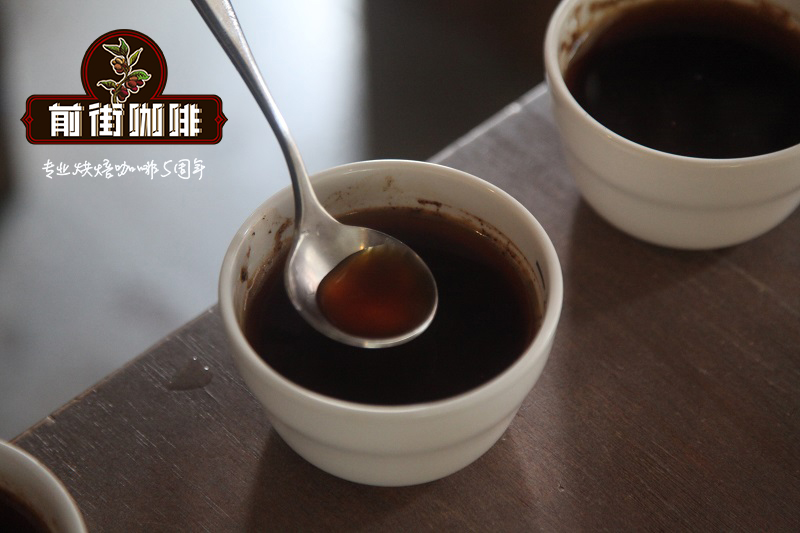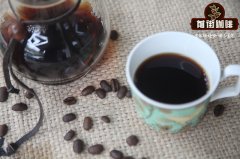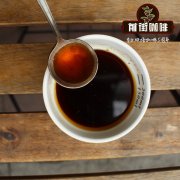How is decaf made? How to lower caffeine?

Professional coffee knowledge exchange more coffee bean information please follow the coffee workshop (Wechat official account cafe_style)
Factors affecting caffeine content, such as the type of coffee beans, soaking time, grinding thickness, cooking method, water temperature, extraction time. Wait. Caffeine has some effects on the body, which leads to the popularity of decaffeinated coffee.
Decaffeinated coffee means that before roasting, the coffee is specially treated to remove 96% of the caffeine from Murray and 98% of the caffeine. A cup of coffee contains about 5% caffeine. Generally speaking, there are three ways to remove caffeine:
I. solvent extraction
Direct extraction method:
Coffee beans are softened, then heated with high-temperature and high-pressure steam to expand the bean surface and increase the contact area, then the dichloromethane (CH3CI) solvent is poured into the bean to contact the solvent to extract caffeine.
In this method, dichloromethane is used to adsorb bean surface to dissolve caffeine, but it does not affect the flavor of coffee beans.
Indirect extraction method:
The beans are first softened and then poured into warm water, where caffeine and other ingredients are dissolved into warm water, where the solution becomes coffee essence, which is then imported into another container to add dichloromethane. After heating, caffeine will evaporate with the extraction solution. Finally, the non-caffeinated essence is introduced into the coffee beans extracted in warm water, allowing the coffee beans to reabsorb the lost ingredients.
This method uses indirect extraction, but it is easy to lose the flavor of coffee.
II. Swiss Water treatment method (SWP)
After the coffee beans are soaked in warm water, after caffeine and other ingredients are dissolved in the water, the caffeine in the essence is filtered with activated carbon, and then the non-caffeinated essence is introduced back to the previous coffee beans, allowing the beans to reabsorb the lost ingredients.
This approach emphasizes that caffeine is not extracted with any chemical solvent, which is also a choice for healthy eaters; although it is not extracted with chemical solvents, some of the ingredients of the coffee are also filtered by activated carbon, resulting in the loss of some flavor of the coffee, not only that, the low-caffeinated coffee produced by this method is also more expensive.
3. Carbon dioxide high pressure extraction (SCF)
When roasting coffee beans, there is a large amount of carbon dioxide (CO2). At this time, the carbon dioxide is treated under high pressure to become liquid, and then poured into the processed coffee beans to remove caffeine, and then the pressure is released to convert the carbon dioxide into gas volatilization.
The removal of caffeine in this way will not cause damage to the coffee beans, the color will not change, and it is not easy to extract substances other than caffeine, which can retain the original flavor of the coffee beans, but it needs a large amount of investment equipment because it needs a special high-pressure environment. Therefore, the amount of low-caffeinated coffee extracted in this way is less than that seen on the market.
The front street hand flushing and cooking suggestions:
Fuji 3.5 V60 filter cup 90 ℃ water temperature 1:15, total time two minutes.
Important Notice :
前街咖啡 FrontStreet Coffee has moved to new addredd:
FrontStreet Coffee Address: 315,Donghua East Road,GuangZhou
Tel:020 38364473
- Prev

How do you make decaf? How is decaf made? The treatment of decaf coffee
Professional coffee knowledge exchange more coffee bean information please follow the coffee workshop (Wechat official account cafe_style) the current production methods of decaf coffee beans are as follows: 1. Direct contact method: use chemical solvents such as dichloromethane (methylene chloride) and ethyl acetate (ethyl acetate) to dissolve caffeine in coffee beans. Such as Germany EA (ethyl acetate)
- Next

Does the sun treatment of coffee affect the quality and flavor of coffee beans?
Professional coffee knowledge exchange more coffee bean information Please pay attention to the coffee workshop (Wechat official account cafe_style) the sun method is the oldest method of coffee treatment. according to literature, the Arabs began to use the sun method to deal with coffee fruit more than 1000 years ago in the 11th century. Because of the refreshing effect of coffee, coffee was introduced into the West from the Arab world at that time.
Related
- Beginners will see the "Coffee pull flower" guide!
- What is the difference between ice blog purified milk and ordinary milk coffee?
- Why is the Philippines the largest producer of crops in Liberia?
- For coffee extraction, should the fine powder be retained?
- How does extracted espresso fill pressed powder? How much strength does it take to press the powder?
- How to make jasmine cold extract coffee? Is the jasmine + latte good?
- Will this little toy really make the coffee taste better? How does Lily Drip affect coffee extraction?
- Will the action of slapping the filter cup also affect coffee extraction?
- What's the difference between powder-to-water ratio and powder-to-liquid ratio?
- What is the Ethiopian local species? What does it have to do with Heirloom native species?

